Lily is a culture that has long been popular with gardeners. In modern flower beds you can find various varieties that differ from each other in height, color, shape and type of buds. What lilies need to be cleaned for the winter and how to store lily bulbs in the winter?
Content
Basic rules for storing lilies
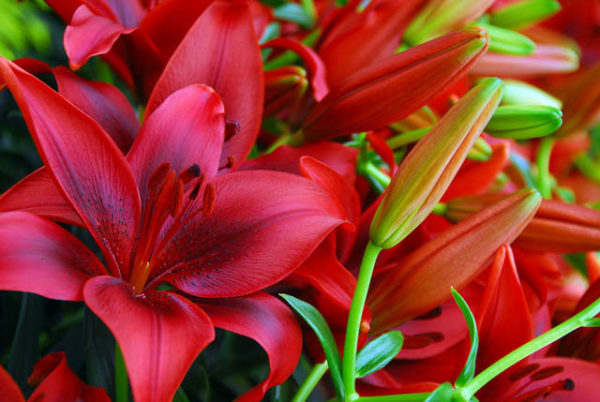
When growing flowers, experienced gardeners use a variety of storage options. Some people prefer a refrigerator, while others place their bulbs in peat-crates or under snow. Everyone chooses the right method.
But when storing lilies, it is necessary to provide the necessary conditions:
- the location should be characterized by moderate humidity, if the air is too dry, the lilies will begin to dry, and if humidity is too high, they will rot;
- the air temperature should be moderate (with a high value they sprout early, with a low they rise late);
- so that the culture is not covered with mold and does not get sick, you need to take care of good ventilation.
Proper preparation
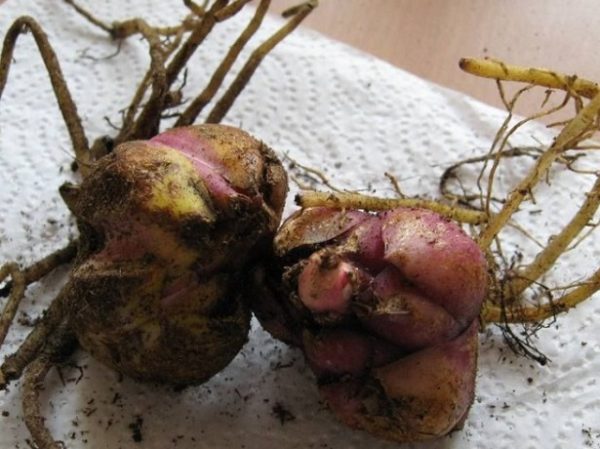
The key to quality preservation is the proper preparation of planting material in the fall. After the plant fades, it is not necessary to cut off the inflorescences and stems, it is necessary to let them naturally dry. A plant needs about 1.5 months to rest.
Dig bulbs with the onset of frost. First, cut the stems, leaving about 5 cm above the ground. Then, a circular slit is separated with a fork so as not to damage the roots. Then the bulbs are carefully removed from the soil.
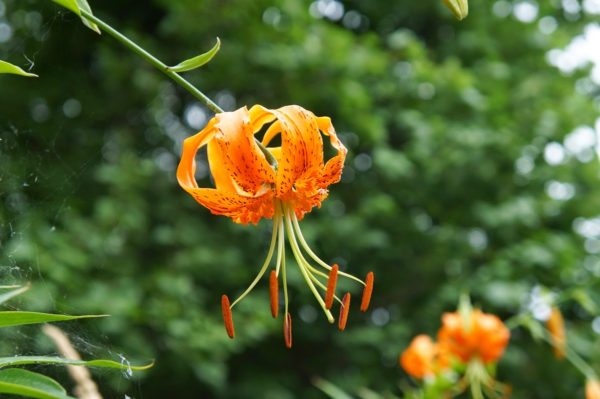 You may be interested in:
You may be interested in:The bulbs are washed in water and sent to dry in a cool, darkened place. Before storage, each is inspected for signs of decay or disease. After drying (about a day), lilies are treated with fungicidal powder, placed in paper bags or wrapped in a newspaper. Prepared material is stored using cardboard boxes, where there are holes for ventilation. Each onion is shifted with sawdust or moss. As a storage room, you can choose a basement, garage or balcony.
Preservation Methods
Storage of lilies can be implemented in various ways. You can arrange it in paper or drawers, or you can use more complex, but no less reliable options.
- If the lilies sprout prematurely, and before transplanting to a permanent place, it’s far, you should plant flowers in temporary flowerpots. Then a flower pot is placed in a cool area.
- Lilies are stored in plastic bags. Holes are pierced in them. A peat layer of 15 cm is poured at the very bottom. Bulbs are placed on it. The plants are again sprinkled with earth, and the bulbs are laid again. After the procedure, the bag is tied and placed in a cardboard box for storage.
- Some practice placing bulbs in peat pots.The containers are placed in a container and placed in a suitable place for storage. It is very convenient to use peat planting pots, as in spring they can be planted along with crops. A few days before moving to a permanent place, the pots are carried out in warmer conditions.
Acceptable Storage Location
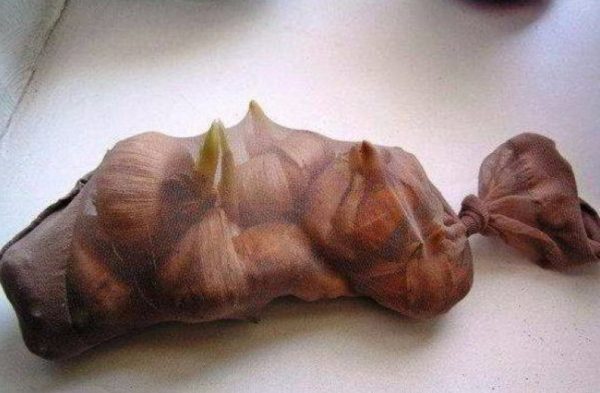
The best place for preservation is considered to be a room with a constant temperature regime from 0 to 5 degrees and average humidity, where there are no fruits and vegetables. In the role of such a room, you can choose a balcony, a loggia, a barn or a garage.
An important condition for successful storage is the availability of ventilation. Planting material is sorted in accordance with the size, and then laid out in bags, alternating with a layer of peat or wrapping paper.
As containers for storage boxes with ventilation. Lilies are spread with moss, or sprinkled with shavings or sawdust of coniferous trees.
Features of storing lilies at home
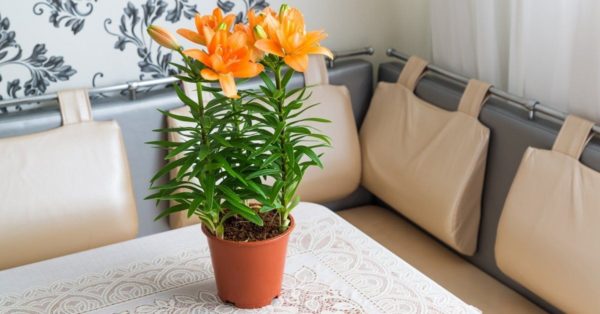
There are many ways to store bulbs. One of the most common is the use of a refrigerator in the apartment. In this case, the bulbs are folded into bags, placed in a compartment for vegetables and fruits, where the temperature is maintained from 0 to 5 degrees. This will not allow the bulbs to freeze, but will also prevent their earlier germination.
But this metol has its drawbacks. Fruits and vegetables are secreted during storage of ethylene; it makes breathing difficult for lilies. There is also insufficient ventilation in the refrigerator. Similar disadvantages when placed in the cellar.
Leave the bulbs in the soil
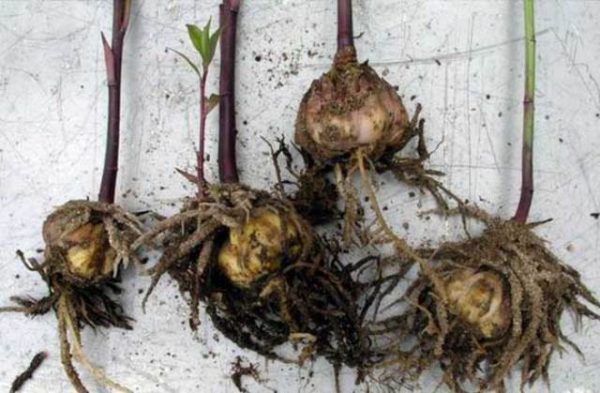
Another original and interesting option for storing lilies is open ground. For success, several conditions must be provided:
- good drainage;
- thermal insulation;
- waterproof shelter.
For such storage, a place is chosen where most of the snow accumulates in winter, and in the spring it lurks later than most. Most often this is a site located with a northern house.
How to Shelter Lilies for Wintering
After choosing the most suitable site, they dig a trench on it. It can be strengthened with boards, and also provide for roof protection. To prevent the lid from freezing to the ground, polyethylene is placed under it.
The first layer is laid in the trench drainage, which protect the spring from stagnant water. Bulbs should be laid for storage during the thaw period. A layer of plastic bags filled with water is placed on top. This will ensure temperature stabilization. On the basis of water, it is easy to determine whether the bulbs are frozen or not.
Reproduction during storage
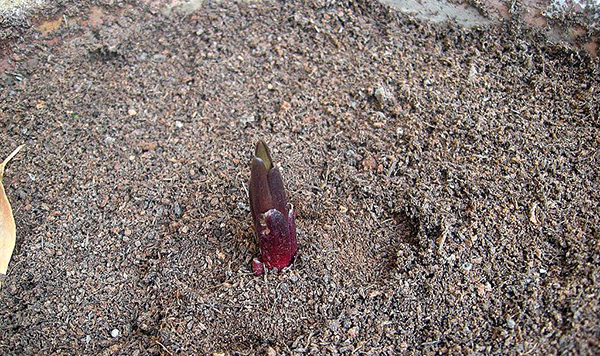
In winter, when the bulbs are in storage, they can be propagated. This procedure is performed using scales. They are very carefully removed from the bulb, processed in potassium permanganate or any fungicide. Further, they are dried and put into bags with peat composition. Then stored similarly to other bulbs.
By spring, the separated flakes become strewn with small onions, the diameter of which is no more than 1 cm. They are carefully separated and planted in a permanent place.
Landing time
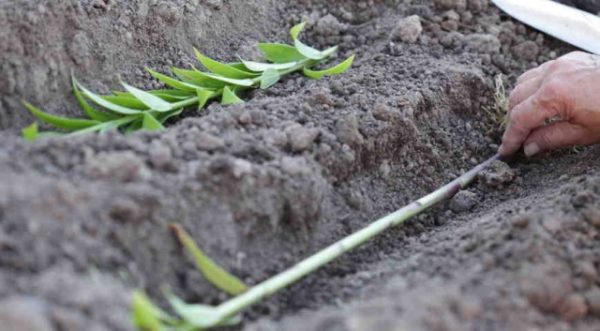
The most favorable period for planting lilies is considered the time when the plant has faded (end of summer - mid-autumn). If the purchase of lilies was made in the spring, then you can plant the bulbs as soon as the snow melts and the soil thaws. It is best to plant lilies of late varieties in spring.
For large bulbs, the planting depth is 25 cm, for smaller ones this parameter is determined in accordance with the size. The bulb is planted to a depth of 3 times its size. After planting, irrigation with settled water is carried out and mulching with crushed bark is performed. To protect young sprouts of lilies, they can be covered with cut plastic bottles.
Agricultural Techniques
Growing lilies is a complex process that involves various agricultural techniques. Each of them has a specific meaning. When growing lilies, varieties should be taken into account, because each has its own characteristics. There are many varieties of culture that can endure the harsh winter, while others disappear in the soil and in small frosts. Therefore, not all lilies can be dug up.
Do all lilies need to be dug up
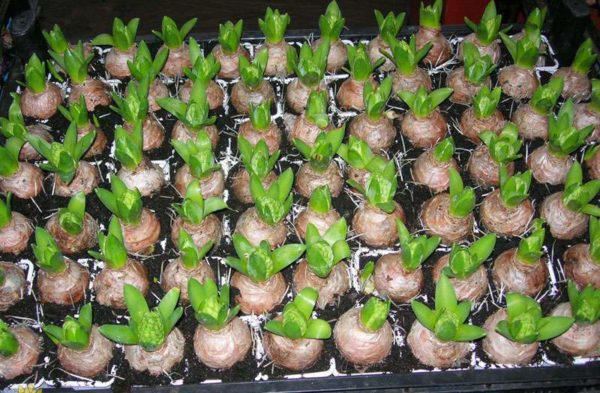
Many lilies are characterized as frost-resistant crops. But you need to find out whether the plant is a hybrid.
Be sure to remove tubular, oriental, Asian and American varieties from the ground for winter storage.
If the lily is counted among hybrids of LA lilies, then they should be removed from the ground for the winter annually, regardless of climatic conditions. A feature of this variety is the rapid formation of children, if they are not removed, then they will take away all the nutrients from the parent plant.
Do not dig the following plant varieties for the winter:
- Asian hybrid;
- matragon;
- Daurian Lily;
- Pennsylvania State Hybrid;
- hybrid of lilies OA.
You can leave a tiger lily for the winter, it perfectly tolerates winter. For reliability, soil should be mulched using sawdust and spruce paws. Additionally, spruce paws are laid as shelter.
When and how do they dig a lily for the winter
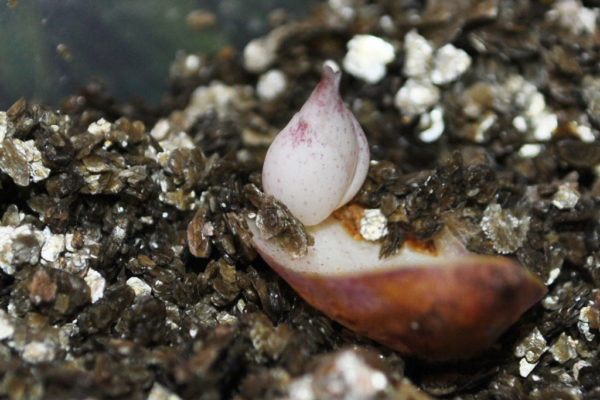
Some varieties drip for wintering. But any flowers, regardless of the indicators of frost resistance, periodically should be dug up to remove excess children, as well as change to a new place.
For different varieties of hybrids, their own transplant dates apply:
- Asian hybrids and varieties of LA class hybrids (Longiflorum-Asian) should be dug up from August 15 to 20;
- hybrids of the American type and plants of the OT class (Oriental-Tubular) are not dug up every year, but this must be desired from August 25 to September 1;
- Oriental hybrids are removed from the earth only for transplantation and periodic removal of children from September 1 to 5.
 You may be interested in:
You may be interested in:Digging flowers is allowed only after the stems have dried.
How to keep lilies safe
The question of the safety of bulbs is complex and does not have a clear answer. Digging or leaving plants in the ground for winter depends on many factors. First of all, from the plant variety itself, as well as the weather conditions of the area.
But sometimes transplanting and digging should be done in order to preserve the decorativeness of flowers, and also not to get lips overgrown and weak plants. This can happen if the parental bulb is abundantly covered in children. They not only thicken the plantings and the flowers become much smaller, but also lead to an insufficient supply of nutrients to the parent plant.
Ways to shelter for the winter
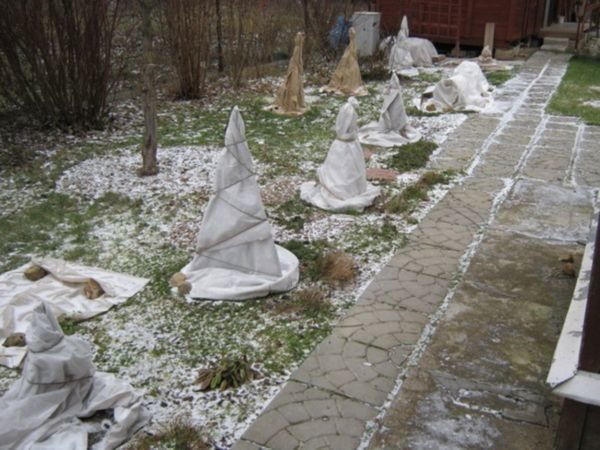
To save the lilies for the winter, which are planned to be left in the old place, it will be very necessary to organize a reliable shelter. There are many options.
- In autumn (end of September - beginning of October) after cutting old stems, mulching is carried out using leaves or peat. Nothing more is needed, since a thick layer of snow is the best cover.
- So that the bulbous shoots do not germinate too early and do not suffer from late frosts, it is possible to cover the beds with lilies with a layer of fallen leaves after freezing the ground.
- In the northwestern territories, the best shelter after a slight freezing of the soil is a layer of spruce or dry leaves of 10-15 cm.
Storage errors
When storing lily bulbs in winter at home, a person can make a number of mistakes, almost all of them are associated with the created conditions.
- a high level of humidity will cause the bulbs to rot and mold;
- at low humidity, planting material becomes unsuitable for planting - empties and dries;
- too high a temperature will lead to rapid untimely germination;
- low temperatures, on the contrary, will slow down the process of budding, which leads to later flowering.
During the storage period, every 3 months, the condition of the bulbs should be checked: if mold is found, it should be wiped with a damp cloth and then sprinkled with a coal composition. If areas with rot are found, then they should be cut with a disinfected solution, and then treated with brilliant green.
If the bulbs begin to dry, then it is recommended to wrap them with wet paper.
Lily is a very beautiful plant that delights with flowers for a long time in the summer. But in order to get beautiful bright flowers, all the rules of growing and storage should be considered.

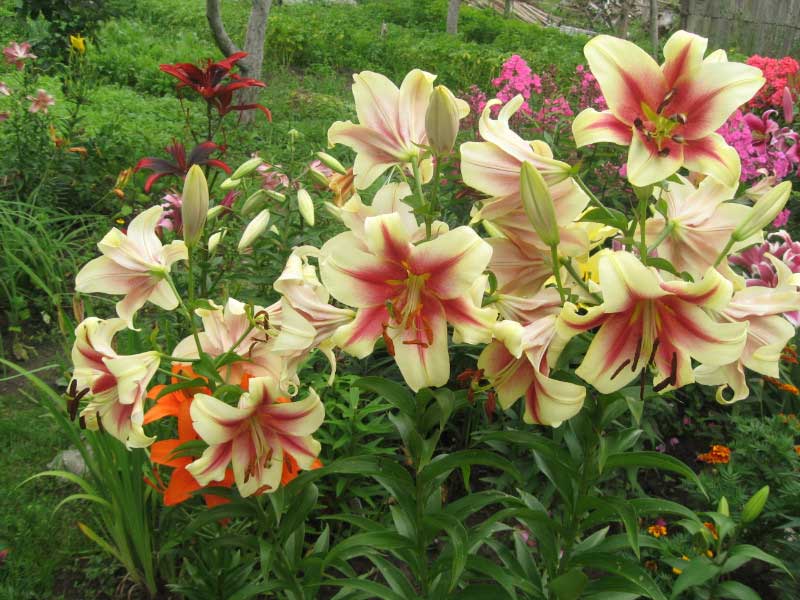 Lily care after flowering
Lily care after flowering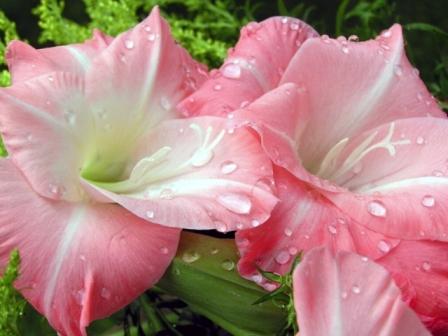 Lilies faded: what to do next?
Lilies faded: what to do next?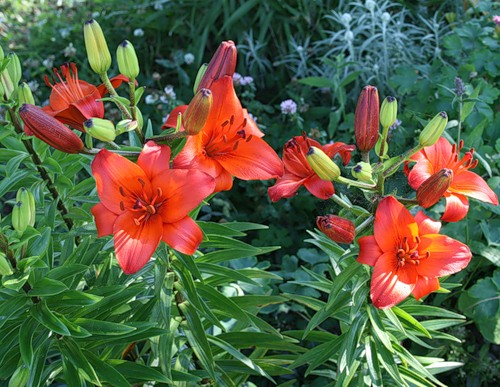 Planting lilies in the open ground and caring for them
Planting lilies in the open ground and caring for them